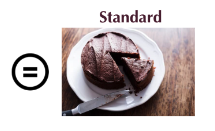If you are not a Science teacher, you may not have even heard of the idea of Cross Cutting Concepts (CCC). In my quest to learn more about the different sets of standards, I have been doing research into the Next Generation Science Standards (NGSS). Let me tell you, this IS NOT the way I learned Science in high school. What a relief because it was my least favorite subject. I remember that it felt very disjointed from other subjects and I was never able to feel connected to the material.

Since my high school days, there have been many developments in the Science standards world. According to the researchers at the California Academy of Sciences, the NGSS have been split into three distinct sections. These are practices, core content, and cross cutting concepts. If you read the last blog about Math, you might recognize that the Math CCSS were split into practices and core content. So you might be thinking, “So what, how does this affect my teaching?” I think you might be surprised at the connections that CCCs have with other subjects. Where there is a connection, there is an opportunity to deepen the learning. I want to share an analogy with you about cake (the science standard). If you are like me, you might just go to Costco and buy a cake. Let’s say that you are actually going to bake your own cake, what do you need to make that happen? In the picture below, you can see that the right formula for a Science cake includes the tools and ingredients (practices), the baked cake (core content), and the frosting (CCC).

It is only with the combination of all 3 that you have a completed cake (standard)! Think of the CCC as a framework for students to make sense of new material and to allow flexibility and creativity for students to make their own discoveries. Some might even say it’s the icing on the cake…

The seven Cross Cutting Concepts are explained in detail in this video from the California Academy of Sciences. To really dig into the NGSS, here is a document from CCSSO explaining the specifics. The CCCs are:
- Patterns
- Cause and effect
- Scale, proportion, and quantity
- Systems and system models
- Energy and matter
- Structure and function
- Stability and change
Many of those concepts are building good habits in all subject areas and can be seen running concurrently in other standard sets. A great way to demonstrate these CCCs for students in any subject or grade level is to focus on patterns. I found this blog post “How Patterns Help Children Learn About Life” by Diana Mendez. She gives many suggestions on incorporating pattern activities into the day. Below is the Cross Cutting Concept matrix* for patterns.

* Adapted from: National Research Council (2011). A Framework for K-12 Science Education: Practices, Crosscutting Concepts, and Core Ideas. Committee on a Conceptual Framework for New K-12 Science Education Standards. Board on Science Education, Division of Behavioral and Social Sciences and Education. Washington, DC: The National Academy Press. Chapter 4: Crosscutting Concepts.
This matrix shows that elementary students are building the foundational skills of recognizing, sorting, classifying, analyzing, and providing evidence. These are skills that could easily be incorporated in any subject. My favorite strategy that fosters finding patterns is See, Think, Wonder. You can learn more about this strategy in this episode of Branching Out.
I know that my former high school self would have loved learning Science in the context of the Cross Cutting Concepts. I might even have even decided I liked Science because I could see all of the connections to other subjects. Have you thought about the Cross Cutting Concepts? Can you see a connection to your subject area? Please join in the conversation by tagging us @KaneCountyROE.

Raven Szalkowski – Professional Learning Coordinator
(t):630-762-2056
(e):rszalkowski@kaneroe.org
